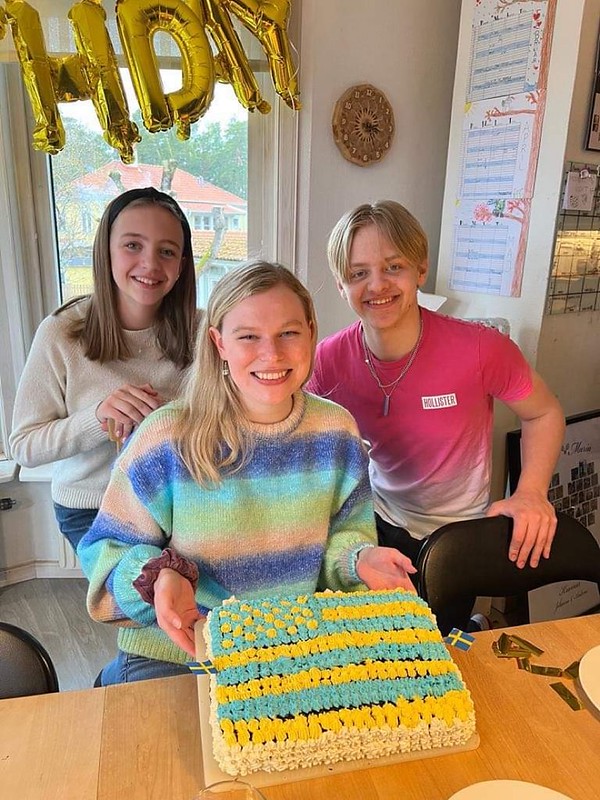A look into Swedish culture
By Mary T.
May 5, 2022
I have officially been in Stockholm for over three months now and have less than a month to go. It is crazy how fast time has flown; a semester has never felt so short. Instead of writing about my personal travel or studies, I wanted to highlight my experience with Swedish culture. I am by no means an expert but here is a quick glance into Swedish life through an American lens.
When I first arrived in Stockholm, my program had a crash course on Swedish culture and temperament. Stereotypically, Swedes tend to be reserved compared to Americans. Sitting right next to a Swede on public transportation is considered weird and uncomfortable even during rush hour. Swedes also don’t enjoy small talk like most Americans. Asking a cashier “how are you today?” in Sweden is not commonplace and is seen almost as an invasion of privacy. The only acceptable and fool-proof topic for small talk is the weather.
Swedes are also known to be non-confrontational and will usually go out of their way to avoid confrontation. Similarly, Swedes are not as competitive as Americans. I have seen this first-hand with my host family while playing mini-golf together. If you have a bad first stroke, you are allowed to start over. This was really weird to me at first because that would never happen in my family where every stroke counts no matter how good or bad — you always play the ball where it lands.
The last big difference in culture is Swedes have a strong sense of trust in others. There is an expectation that everyone will do the right thing. The trusting ideology can be seen in Sweden’s reaction to COVID-19 and its welfare system. Swedish citizens trusted that other Swedes would stay at home and social distance if needed. Sweden never had restrictive mask mandates and I haven’t worn a mask since I arrived because COVID has been under control with high vaccination rates and trust in government. Regarding welfare, Swedes want to help their neighbors and happily pay high taxes to receive amazing benefits like free healthcare, free education and an extensive public transportation system.
Traditions are an integral part of Swedish culture. The most popular pastime and the cornerstone of Swedish culture is fika. Fika means taking a break for enjoyment usually accompanied by a nice cup of coffee and a pastry. The purpose of a fika is to discuss hobbies and forget work or responsibilities for a brief moment. Typically, fikas are meant to last around 30 minutes to an hour.
Spring is finally coming in Stockholm and Swedes will take any chance they get to soak up the sun’s rays, even when it is cold. Now that it is warm (45–60 degrees Fahrenheit), many Swedes are going outside for running, walking, hiking or even swimming if you are my host sister, Tilda. Swedes as a whole love to be in nature no matter the weather. Connecting with nature is an important part of being a Swede.
Another fun tradition is lördagsgodis, which translates to “Saturday candy.” Swedes wait an entire week to eat candy on Saturdays. Lördagsgodis originally started to encourage dental hygiene and lower sugar intake among Swedes, but it has stuck around, making Saturdays special. In my host family, our lördagsgodis usually includes chips, a glass of Coca-Cola and a freshly baked dessert (our current favorite is Oreo cheesecake).
Speaking of food, below are some of my favorite and least favorite Swedish foods I have eaten. If you have ever been to IKEA, you may have heard of Swedish meatballs. These are a staple in Swedish culture and homemade Swedish meatballs are delicious with boiled potatoes on the side. I’ve also tried reindeer that was prepared in a gravy sauce with bacon. Reindeer meat can be fairly dry, so the sauce really helps it taste better. As you would expect, it was similar in taste and texture to deer meat. A popular side dish that I love is potato gratin. The Swedish version is thinly sliced potatoes with garlic cream poured on top seasoned with salt and pepper. I can’t wait to bring this recipe back home it’s so tasty.
Moving on to Swedish candy, I’ve noticed that most of the candy available are gummies. Popular gummies are Zoo (red, fruit-flavored), Gott & Blandat (fruit mix), Bilar (car-shaped), and the worst of all Djungelvrål (extremely salty black licorice). Sweden also has many chocolate options to choose from like Kex (similar to Kit-Kat), Daim (almond and caramel), Japp (chocolate meringue with caramel) and chocolate with many different flavors like pistachio, popcorn, orange and hazelnut.
Lastly, Swedish pastries are amazing; it makes sense why Swedes prioritize fika as a reason to eat their yummy desserts. Kladdkaka is a half-baked chocolate cake, so the outside is firm in texture while the inside is gooey chocolate. Kanelbulle are cinnamon rolls that you could find at any coffee shop or bakery. They have the perfect amount of cinnamon sweetness. Semla is a seasonal pastry that is a cardamom bun that is filled with almond paste and cream. Another Swedish classic is Chokladbollar, which are chocolate balls. They are similar to cake pops and have coconut shavings on the outside. My favorite dessert that I’ve had while here is the birthday cake that my host siblings made for me. Lucas and Tilda baked a devil’s food chocolate cake and decorated it to look like the American flag using Sweden’s colors of blue and yellow. It was so precious and thoughtful that they wanted to bake me a cake, it was perfect.

I hope I gave you a glimpse into Swedish culture. It has been such a wonderful experience living life as a Swede, and I am not quite ready to go home! Tack för att du läser min blogg (thank you for reading my blog)!